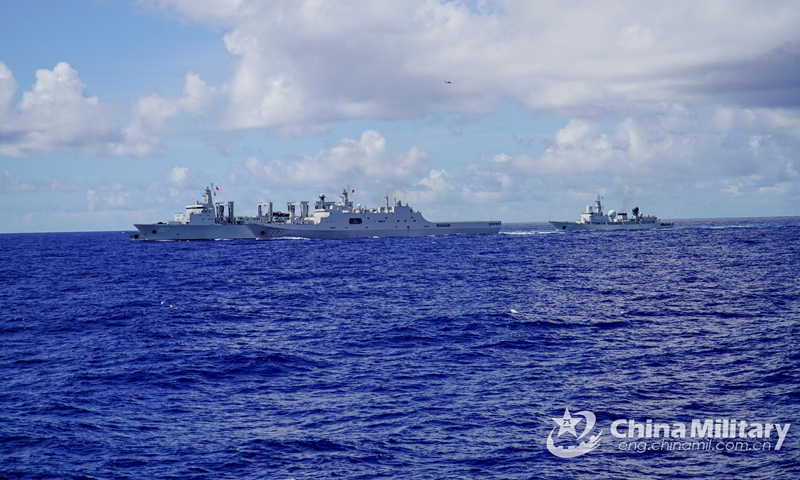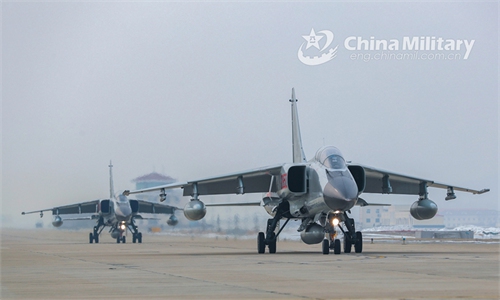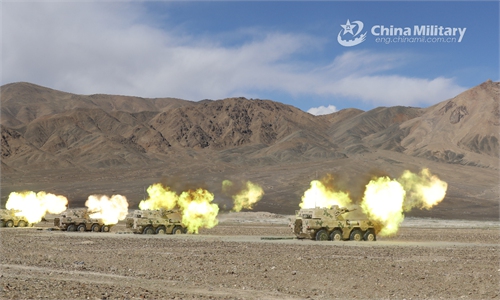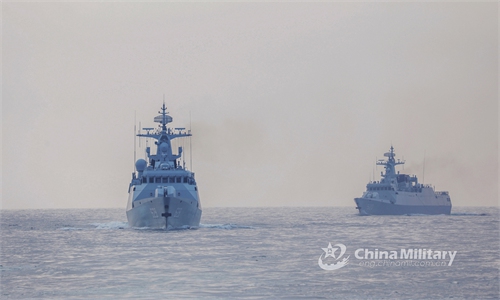US attempts to monitor PLA submarines with increased spy ship activities in S.China Sea: think tank report

Three warships attached to a naval flotilla under the PLA Southern Theater Command, including the amphibious dock landing ship Wuzhishan (Hull 987) and comprehensive supply ship Chaganhu (Hull 967) , steam in formation during a combined arms training exercise. The flotilla under training has traveled more than 8,000 nautical miles in over 30 days, conducting dozes of training items including air and missile defense, anti-terrorism and anti-piracy operation, and joint search and rescue. Photo: China Military Online
A Beijing-based think tank is keeping an eye on an increase in close-range reconnaissance activities this year by US Navy ocean surveillance ships in the South China Sea, saying in a report released on Tuesday that the US is attempting to monitor Chinese submarine activities in the region and provide anti-submarine intelligence support.
This situation poses a significant threat not only to the Chinese People's Liberation Army (PLA) submarines, but also to its submarine-based nuclear missiles, Chinese experts warned, and suggested countermeasures including noise disruptions by using civilian and military vessels.
In the first half of 2021, the South China Sea saw a surge in US maritime reconnaissance activities, with all five ocean surveillance ships owned by the US Navy - four Victorious-class ships and an Impeccable-class ship - having conducted missions in the region, the South China Sea Strategic Situation Probing Initiative (SCSPI) said in the report.
The US deployed at least one surveillance ship to the South China Sea in at least 161 days out of the total of 181 days in the first half of 2021, a coverage rate of 89 percent that indicates such deployments have become routine, the SCSPI said.
The US ships' missions were likely intended to monitor PLA submarine movements, analyze their key activity regions and frequently used routes, and provide anti-submarine intelligence support, the report said, noting that the US ocean surveillance ship activities were accompanied by aerial monitoring, with more than 2,000 US spy aircraft conducting close-range reconnaissance on China each year.
According to the SCSPI's monitoring, waters off the Xisha and Zhongsha islands were some key points of interest for the US surveillance ships, as the ocean there is more than 2,000 meters deep and has a complicated environment, making the region a natural battlefield for underwater and anti-submarine warfare.
Before 2021, the US Navy rarely deployed ships to the west of the Xisha Islands, but both the USNS Victorious and USNS Impeccable conducted reconnaissance this year, the report pointed out.
Reportedly planning to build seven next-generation ocean surveillance ships, the US is expected to further increase its maritime reconnaissance activities in the South China Sea, the report said.
US ocean surveillance ship activities are a huge threat to the PLA, not only to its submarine forces, but also to its submarine-based strategic nuclear missiles, Song Zhongping, a Chinese military expert and TV commentator, told the Global Times on Tuesday.
The US is gathering environmental information on underwater battlefields and creating a database that can be used to search for and attack PLA submarines much faster in a possible future battle, Song said.
Usually, the US spy ships operate outside of territorial waters and exclusive economic zones, but China can create noise disruptions and stop their intelligence-gathering, Song said.
The US ships use surveillance towed-array sensor systems and low-frequency active sonar arrays to track both nuclear-powered and diesel-powered submarines, and then share the data with other ships and command centers via satellite uplink, the SCSPI report said.
Fishing boat activities near the spy ships would make enough noise to disrupt this activity, not to mention pointed disruptions by law enforcement ships and warships, Song said.




